Transforming Student Presentations with Free AI Tools
A Complete Guide for Academic Success in 2025
I've discovered how artificial intelligence is revolutionizing the way students create and deliver presentations. In this guide, I'll share the best free AI tools that can help you overcome common presentation challenges and elevate your academic work to professional quality - without spending a dime.
The Evolution of Student Presentations in the AI Era
When I first started creating academic presentations, I spent countless hours wrestling with complex design software and still ended up with basic, uninspiring slides. This is a common experience for many students who face three major challenges with traditional presentation tools:
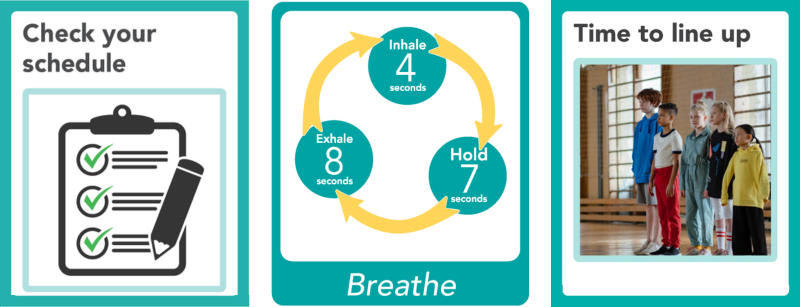
Common Presentation Challenges for Students
- Time constraints: Balancing multiple assignments while creating visually appealing presentations
- Design limitations: Lack of design skills or resources to create professional-looking slides
- Content organization: Difficulty in structuring complex academic information in a clear, engaging way
The emergence of AI-powered presentation tools has fundamentally changed this landscape. I've witnessed firsthand how these technologies are democratizing access to high-quality presentation creation, especially for students with limited resources or design experience. Rather than spending hours mastering complex software, we can now focus on refining our ideas and content.
Impact of AI-Enhanced Presentations on Student Performance
Recent studies suggest that visually compelling presentations can improve student grades by up to 25% compared to text-heavy slides. This improvement stems from increased audience engagement, better information retention, and greater presenter confidence when working with professionally designed materials.
The shift we're experiencing isn't just about prettier slides—it represents a fundamental change in how academic ideas are communicated. By using free AI tools for students, we can now create presentations that rival professional work, allowing our ideas to shine through without being hindered by technical or design limitations.
Top Free AI Presentation Tools for Students in 2025
After testing dozens of AI presentation solutions, I've identified the most valuable free tools that deliver professional results without requiring a student budget. Each offers unique strengths for different presentation needs.
AI Presentation Tool Ecosystem
flowchart TD
Student([Student]) --> Tools
Tools --> BA[Beautiful.ai]
Tools --> Fotor[Fotor AI]
Tools --> Gamma[Gamma AI]
Tools --> PDF[PDF.ai]
BA --> Features1[Free Pro for Students\nSmart Slides\nTemplate Library]
Fotor --> Features2[Text-to-Slides\nMulti-device Access\nSmart Layouts]
Gamma --> Features3[400 AI Credits Free\nEngaging Designs\nWeb Publishing]
PDF --> Features4[Research Assistant\n500 Free Questions\nConcept Extraction]
Features1 & Features2 & Features3 & Features4 --> Output[Professional Academic Presentations]
style Student fill:#FF8000,stroke:#FF8000,color:white
style Output fill:#FF8000,stroke:#FF8000,color:white
style BA fill:#e6f7ff,stroke:#42A5F5
style Fotor fill:#e6f7ff,stroke:#42A5F5
style Gamma fill:#e6f7ff,stroke:#42A5F5
style PDF fill:#e6f7ff,stroke:#42A5F5
Beautiful.ai's Student Program
.gif)
Beautiful.ai offers one of the most generous student programs I've encountered: a free annual Pro subscription that normally costs hundreds of dollars. This program gives students full access to their premium features without the typical limitations of free tiers.
Key Features:
- Smart Slides that automatically adjust design elements as you add content
- Extensive template library specifically designed for academic presentations
- Team collaboration features perfect for group projects
- Export options in multiple formats including PowerPoint compatibility
How to Qualify:
To register for the free student program, you'll need a valid .edu email address or proof of enrollment at an accredited educational institution. The verification process is straightforward—I completed mine in under 5 minutes.
Fotor AI Presentation Maker
Fotor's AI presentation tool stands out for its ability to generate complete slide decks from simple text prompts. I've found it particularly useful when starting from research papers or existing written materials.
Fotor Free Tier Capabilities
Free Tier Highlights:
- Text-to-slides conversion with surprisingly accurate content organization
- Multi-device accessibility (works on laptops, tablets, and smartphones)
- Support for multiple languages—perfect for international students or language courses
- Smart layouts that automatically arrange content for optimal visual impact
- Basic data visualization tools for creating charts and graphs from datasets
While the free version has some limitations on premium templates and export options, I've found it more than adequate for most academic presentation needs. The ability to quickly generate slides from existing text has saved me countless hours.
Gamma AI for Academic Projects
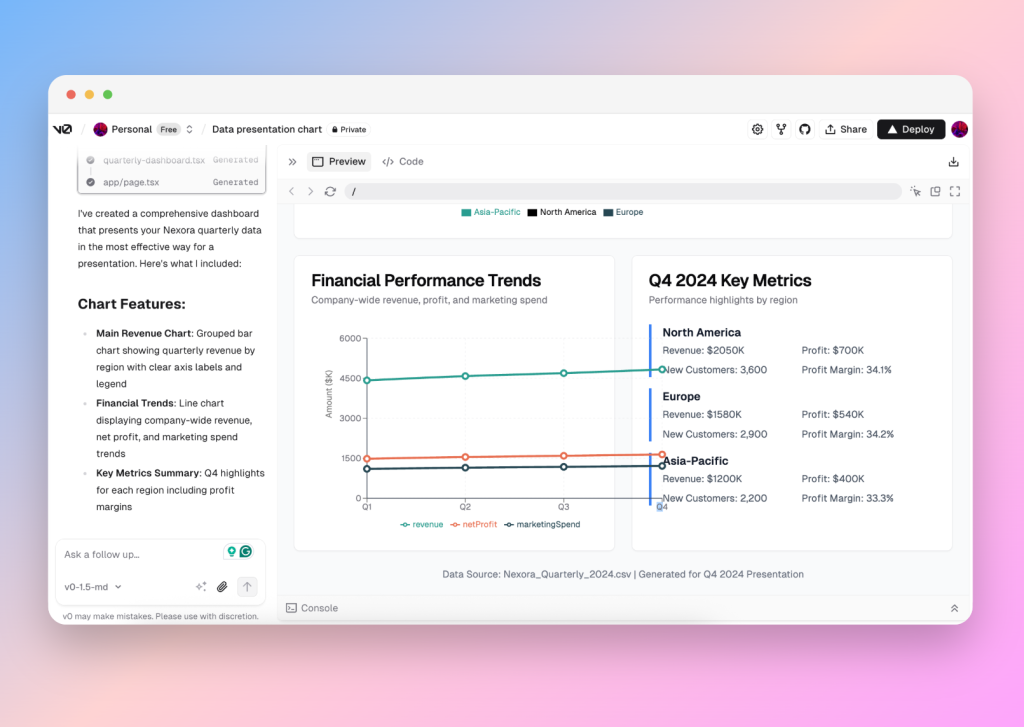
Gamma AI has become my go-to tool for creating visually distinctive presentations that break away from the standard slide format. What makes it particularly valuable for students is how it blends traditional slides with interactive web elements.
Free Plan Offerings:
- 400 AI credits (each slide uses approximately 5 credits)
- Up to 10 cards/slides per presentation
- Ability to create 8-10 complete presentations before needing to upgrade
- Web-based presentation sharing (no download required for viewers)
Best Academic Use Cases:
- Science projects: The interactive elements work well for demonstrating scientific processes
- Research presentations: Clean data visualization and citation formatting
- Creative assignments: Unique layouts that stand out from standard PowerPoint designs
- Thesis defenses: Professional-quality presentation with sophisticated navigation
PDF.ai as a Companion Research Tool
While not strictly a presentation tool, I've found PDF.ai invaluable for the research phase of creating academic presentations. It serves as the perfect companion to the other tools mentioned above.
PDF.ai Research Workflow for Presentations
sequenceDiagram
participant Student
participant PDF.ai
participant Presentation Tool
Student->>PDF.ai: Upload research paper
Student->>PDF.ai: Ask key questions
PDF.ai-->>Student: Extract main concepts
PDF.ai-->>Student: Summarize findings
PDF.ai-->>Student: Highlight key data points
Student->>Presentation Tool: Input extracted insights
Presentation Tool-->>Student: Generate visual slides
Free Tier Research Capabilities:
- 500 monthly questions to extract information from academic papers
- Upload limit of one PDF (up to 10MB) on the free plan
- Ability to ask specific questions about complex research content
Presentation Research Techniques:
- Ask "What are the 5 key takeaways from this paper?" to identify main points for slides
- Request "Summarize the methodology section in 3 bullet points" for methods slides
- Query "What visual elements or data would be most important to include in a presentation?" to identify key visuals
- Ask for "The most compelling statistics or findings" to highlight in your conclusion
By using PDF.ai to extract the most presentation-worthy elements from research materials, I can quickly feed that structured information into Beautiful.ai, Fotor, or Gamma AI to generate polished slides. This combination approach has transformed my research-to-presentation workflow, cutting the time required by more than half.
Strategic Applications for Different Academic Scenarios
Different academic disciplines require unique approaches to visual presentation. I've developed specific strategies for using free ai tools for educational slides across various fields of study.
For Literature and Humanities
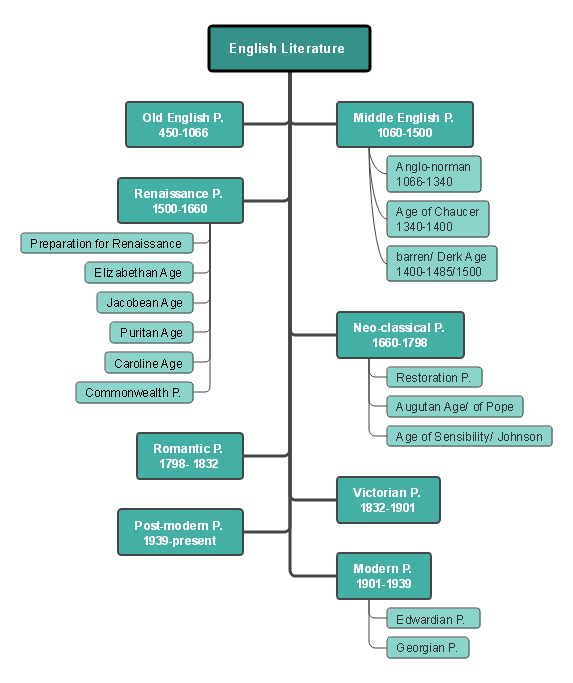
Humanities presentations often involve abstract concepts that can be challenging to visualize. Here's how I use AI tools to make these ideas more concrete and engaging:
Visualizing Abstract Concepts:
- Use Gamma AI to create concept maps that show relationships between themes, characters, and motifs in literary works
- Generate visual metaphors that represent philosophical ideas or historical movements
- Create color-coded timelines that track the evolution of literary or artistic movements
Narrative Structure Techniques:
- Build visual story arcs that map the emotional journey of literary characters
- Use Beautiful.ai's Smart Slides to create comparative analyses of different texts or artistic works
- Develop slide transitions that mirror the narrative structure of the work being analyzed
Copyright-Safe Image Integration:
- Leverage AI-generated imagery that captures the essence of a text without copyright concerns
- Create abstract visual representations of key quotes that emphasize their meaning
- Use public domain artwork and historical imagery with proper attribution
For STEM Presentations
Converting Complex STEM Concepts to Visual Elements
flowchart TD
A[Complex STEM Concept] --> B{Type of Content}
B -->|Formula| C[AI Formula Renderer]
B -->|Process| D[Step Animation]
B -->|Data| E[Interactive Chart]
B -->|Theory| F[Visual Model]
C --> G[Clean Visual Formula\nwith Color Highlighting]
D --> H[Progressive Build\nAnimated Sequence]
E --> I[Dynamic Data\nVisualization]
F --> J[Conceptual Diagram\nor 3D Model]
G & H & I & J --> K[Integrated into\nPresentation Slides]
style A fill:#FF8000,stroke:#FF8000,color:white
style K fill:#FF8000,stroke:#FF8000,color:white
style B fill:#e6f7ff,stroke:#42A5F5
style C fill:#e6f7ff,stroke:#42A5F5
style D fill:#e6f7ff,stroke:#42A5F5
style E fill:#e6f7ff,stroke:#42A5F5
style F fill:#e6f7ff,stroke:#42A5F5
STEM presentations often involve complex data, formulas, and processes that need clear visualization. Here's my approach to making these elements more accessible:
Converting Complex Formulas and Data:
- Use AI to transform mathematical equations into color-coded visual explanations
- Break down complex formulas into step-by-step visual sequences
- Create interactive elements that allow viewers to see variables change in real-time
Process Illustrations:
- Build animated flowcharts that show scientific processes unfolding sequentially
- Use Fotor's smart layout tools to create before/after comparisons of experimental results
- Develop micro-animations that highlight critical steps in technical procedures
Data Visualization for Research:
- Transform raw data tables into compelling charts and graphs with minimal effort
- Use color schemes that highlight statistical significance or key findings
- Create comparison visualizations that make trends and patterns immediately apparent
For Group Projects and Collaborative Work

Group presentations present unique challenges in maintaining consistency while allowing multiple contributors. Here's how I use AI tools to streamline collaborative work:
AI Tool Collaboration Features Comparison
Real-time Collaboration Tools:
- Beautiful.ai's team features allow multiple students to work simultaneously on different slides
- Use commenting systems to provide feedback on specific elements without changing content
- Leverage version history to track contributions and revert changes if needed
Maintaining Design Consistency:
- Create a shared style guide with AI assistance for color schemes, fonts, and layout principles
- Use AI-powered templates that automatically apply consistent styling across all slides
- Designate one team member as the "design lead" to review visual consistency before submission
Integrating Multiple Research Sources:
- Use PDF.ai to extract key points from multiple research papers contributed by different team members
- Create a shared research repository where extracted insights are categorized by topic
- Use AI to identify overlapping themes and contradictions across different sources
- Develop a unified narrative that incorporates diverse research perspectives
Beyond Basic Slides: Advanced AI Features for Academic Excellence
Once you've mastered the basics of AI presentation tools, you can explore more sophisticated features that elevate your academic presentations to professional quality. I've experimented extensively with these advanced capabilities to transform how I communicate complex ideas.
AI-Generated Visual Assets
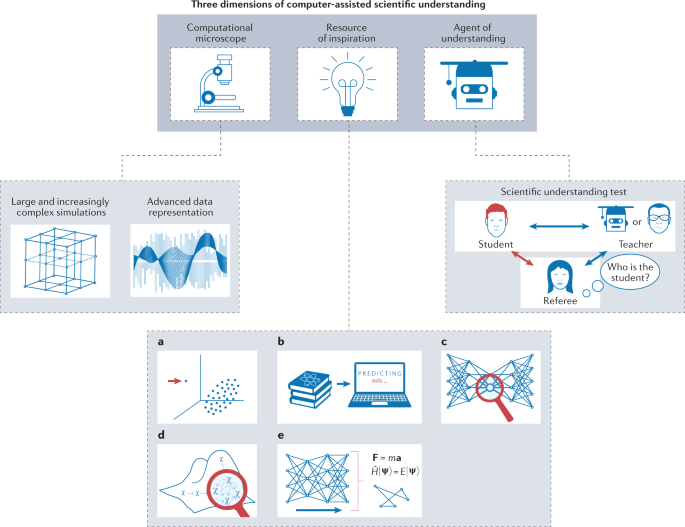
Creating custom visuals used to require graphic design skills or expensive stock photo subscriptions. Now, I can generate presentation-ready visuals with simple text prompts.
Custom Diagrams and Charts:
- Use AI to transform text descriptions into custom diagrams that perfectly match your content needs
- Generate infographics that synthesize multiple data points into a single compelling visual
- Create custom illustrations that demonstrate processes specific to your academic field
Background Design Enhancement:
- Generate AI background for presentations that subtly reinforce your topic without distracting from content
- Create consistent visual themes that carry through an entire presentation
- Develop slide transitions that use visual elements to connect related concepts
Text-to-Visual Conversion:
- Transform dense paragraphs into visual learning aids like flowcharts or mind maps
- Convert statistical information into comparative visualizations
- Create visual summaries of complex research findings that highlight key insights
Content Enhancement Techniques
AI Content Enhancement Process
flowchart LR
A[Academic Content] --> B{AI Enhancement}
B --> C[Language Simplification]
B --> D[Question Generation]
B --> E[Visual Metaphor Creation]
C --> F[Improved Audience\nComprehension]
D --> G[Increased\nEngagement]
E --> H[Better Concept\nRetention]
F & G & H --> I[Enhanced Learning\nOutcomes]
style A fill:#FF8000,stroke:#FF8000,color:white
style I fill:#FF8000,stroke:#FF8000,color:white
Beyond visual elements, AI can help transform how your content is received and understood by your audience.
Language Simplification:
- Use AI to translate complex academic jargon into clear, accessible language
- Create layered explanations that start simple and progressively add complexity
- Generate alternative phrasings for difficult concepts to improve comprehension
Interactive Question Generation:
- Create thought-provoking questions that engage your audience at key points
- Develop rhetorical questions that guide the audience through your reasoning
- Generate discussion prompts that encourage deeper engagement with your material
Visual Metaphor Creation:
- Use AI to identify powerful metaphors that make abstract concepts more concrete
- Create visual analogies that connect unfamiliar ideas to familiar experiences
- Develop consistent metaphorical frameworks that tie your entire presentation together
Presentation Delivery Support

Creating great slides is only part of the presentation equation. I've discovered how AI can also help with the delivery aspects of academic presentations.
Speaker Notes and Guides:
- Generate concise speaker notes that highlight key talking points for each slide
- Create presentation guides with suggested timing for each section
- Develop transition phrases that smoothly connect different parts of your presentation
Practice and Timing Features:
- Use AI-powered rehearsal tools that provide feedback on pacing and clarity
- Set up automatic timers that help you practice staying within time limits
- Create simplified practice versions of complex slides to build confidence
Accessibility Enhancements:
- Generate alt text descriptions for all visual elements
- Create high-contrast versions of slides for better visibility
- Develop supplementary materials for diverse learning needs
- Use AI to check color combinations for accessibility standards compliance
Ethical Considerations and Academic Integrity
While AI tools offer tremendous benefits for student presentations, they also raise important ethical questions about originality and academic integrity. I've developed clear guidelines for using these tools responsibly.
AI Usage Disclosure Spectrum
Proper Citation Guidelines
When using AI-generated content in academic presentations, citation practices are evolving. Here's my approach to proper attribution:
Sample Citation Format for AI-Generated Content:
[Content Description] generated using [Tool Name] AI. ([Date]). Based on [Source of Information if applicable].
Example: "Diagram of photosynthesis process generated using Beautiful.ai AI. (March 15, 2025). Based on data from Smith & Jones (2024)."
Balancing AI Assistance and Original Work:
- Use AI primarily for design enhancement and content organization rather than generating the entire substance of your presentation
- Ensure all key ideas and analyses represent your own understanding and critical thinking
- Use AI as a starting point, then refine and personalize the content to reflect your unique perspective
- Apply the "significant modification" test: Have you substantially modified and improved upon what the AI initially generated?
Understanding Institutional Policies:
Academic institutions vary widely in their policies regarding AI use. I recommend:
- Reviewing your institution's specific guidelines on AI usage in academic work
- Consulting with professors about their expectations for AI disclosure in presentations
- When in doubt, err on the side of transparency about which aspects of your presentation involved AI assistance
- Keeping records of your process, including which elements were AI-generated and which were created manually
Appropriate Disclosure Methods:
- Include a brief "Tools Used" slide at the end of your presentation
- Add small attribution notes in the footer or notes section for specific AI-generated elements
- Be prepared to explain your process if asked during Q&A sessions
- For major projects or theses, include a methodology section that explains how AI tools were used
Future-Proofing Student Presentation Skills
As AI tools continue to evolve, the skills that make student presenters stand out will also change. I've identified key areas to focus on that will remain valuable regardless of technological advances.
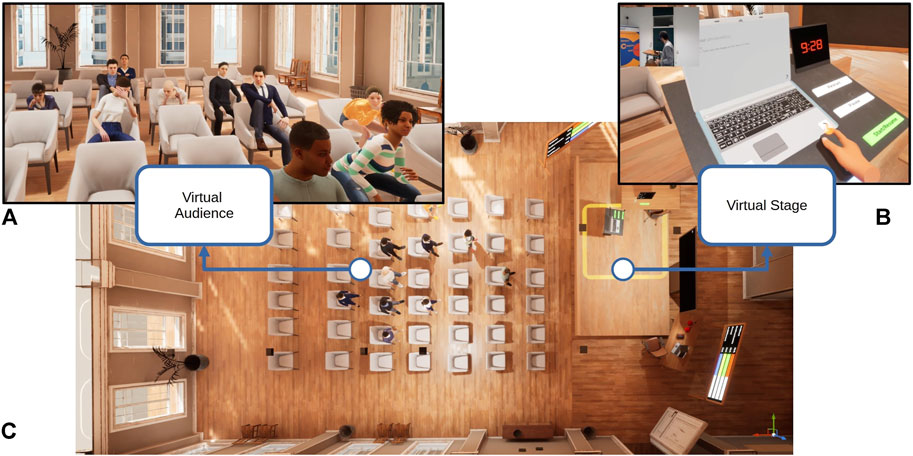
Developing Complementary Human Skills
AI-Human Skill Complementarity
flowchart TD
A[Future-Proof\nPresentation Skills] --> B[AI-Enhanced Skills]
A --> C[Human-Centered Skills]
B --> D[Visual Design\nAutomation]
B --> E[Content Organization\nAssistance]
B --> F[Data Visualization\nTools]
C --> G[Critical Analysis]
C --> H[Storytelling\n& Narrative]
C --> I[Authentic Connection\nwith Audience]
C --> J[Ethical Judgment]
D & E & F --> K[Technical Efficiency]
G & H & I & J --> L[Uniquely Human Value]
K & L --> M[Complete Future-Ready\nPresenter]
style A fill:#FF8000,stroke:#FF8000,color:white
style M fill:#FF8000,stroke:#FF8000,color:white
As ai lesson presentation makers become more sophisticated, focusing on these complementary human skills will ensure you stand out:
Critical Thinking and Analysis:
- Develop the ability to evaluate and synthesize information from multiple sources
- Cultivate a unique perspective that goes beyond what AI can generate
- Practice identifying connections between concepts that might not be obvious to AI systems
Storytelling and Narrative Construction:
- Master the art of creating compelling narratives that engage your audience emotionally
- Learn to structure presentations with narrative tension and resolution
- Develop your unique voice and presentation style that reflects your personality
Audience Connection and Responsiveness:
- Practice reading audience reactions and adjusting your presentation in real-time
- Develop the ability to answer unexpected questions thoughtfully
- Create moments of authentic connection that humanize complex or technical material
Evolving Visual Communication Standards
As AI online presentations become the norm, expectations for visual quality are rising. Here's how to stay ahead:
- Study current design trends across different fields and industries
- Develop an eye for visual hierarchy and information architecture
- Learn basic principles of animation and motion design for dynamic presentations
- Practice creating presentations that work across multiple formats (in-person, virtual, asynchronous)
Workplace Readiness Through AI Fluency
The skills you develop using AI presentation tools as a student will translate directly to valuable workplace competencies:
Academic to Workplace Skill Transfer
- AI tool proficiency is increasingly listed as a desired skill in job descriptions
- Experience with visual communication translates directly to marketing, sales, and leadership roles
- The ability to quickly create professional presentations is valued across virtually all industries
- Understanding how to appropriately use AI assistance demonstrates digital literacy and ethical awareness
Combining Critical Thinking with Visual Expression
The most powerful student presentations combine AI-enhanced visuals with genuinely insightful thinking:
- Use AI tools to handle the technical aspects of visualization so you can focus on developing unique insights
- Approach each presentation as an opportunity to develop a thesis, not just share information
- Create visual frameworks that reflect your personal understanding of complex relationships between ideas
- Practice explaining why your visual choices enhance understanding, not just how they look
Transform Your Visual Expressions with PageOn.ai
Ready to take your student presentations to the next level? PageOn.ai provides powerful visualization tools designed specifically for academic content, making complex ideas instantly understandable through beautiful visuals.
Start Creating with PageOn.ai TodayConclusion: Embracing AI as Your Presentation Partner
Throughout my academic journey, I've discovered that the most effective approach to student presentations is viewing AI not as a replacement for your skills, but as a powerful partner that handles technical aspects while you focus on content and delivery.
The free AI tools we've explored—Beautiful.ai, Fotor, Gamma AI, and PDF.ai—offer students unprecedented access to professional-quality presentation capabilities without financial barriers. By strategically applying these tools to different academic scenarios and developing complementary human skills, you can create presentations that not only earn top grades but also prepare you for future professional success.
As presentation expectations continue to evolve in both academic and professional environments, the ability to effectively leverage AI visualization tools while maintaining your unique voice and critical thinking will set you apart. The future belongs to those who can harness technology to amplify their ideas, not those who simply rely on it.
I encourage you to experiment with these free AI tools, develop your own workflow that balances efficiency with originality, and approach each presentation as an opportunity to communicate your ideas with greater clarity and impact than ever before.
You Might Also Like
Mastering Live Product Demonstrations in Investor Meetings | Captivating Presentation Guide
Learn how to create powerful live product demonstrations that captivate investors, showcase your product's value, and help secure funding through strategic visual storytelling techniques.
Beyond The Pitch: Visualizing Startup Traction Metrics That Win VC Funding
Discover the essential startup traction metrics that venture capitalists truly value. Learn how to visualize growth, efficiency, and revenue metrics to secure funding for your startup.
From Complexity to Clarity: Why Creators Are Trading Notion for Apple Notes
Discover why creators are simplifying their productivity systems by moving from Notion to Apple Notes, and how this digital minimalism enhances creative output and mental clarity.
Strategic Icon Selection Guide: Achieving Visual Consistency in Design Systems
Learn how to create visual harmony through intentional icon systems. Our comprehensive guide covers selection criteria, styling guidelines, and implementation strategies for cohesive design.
